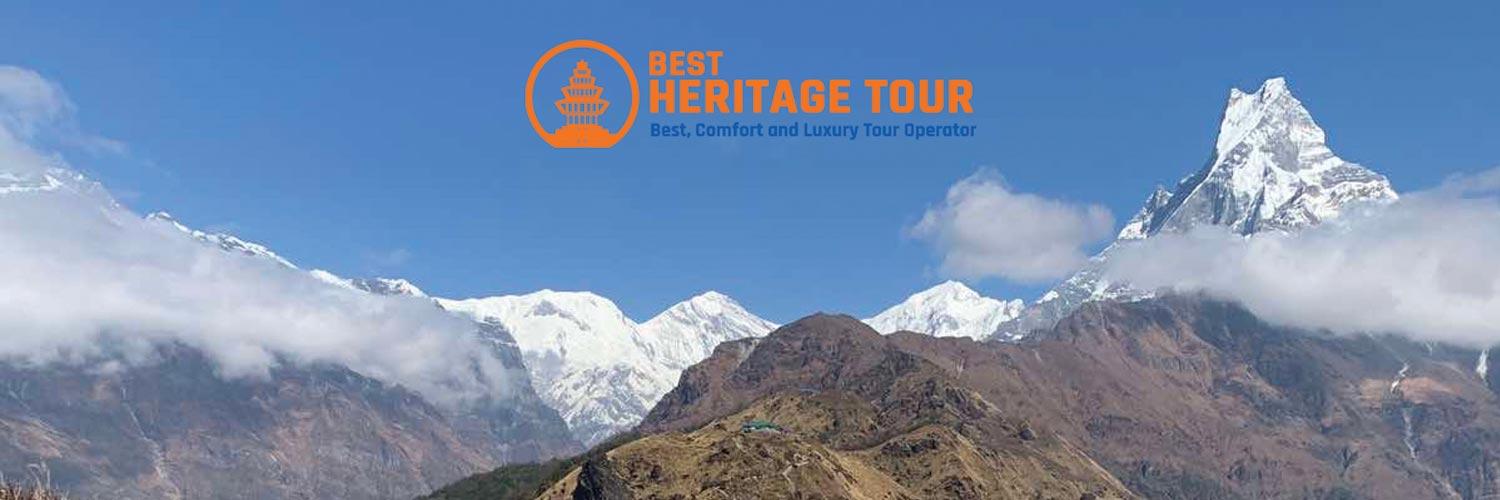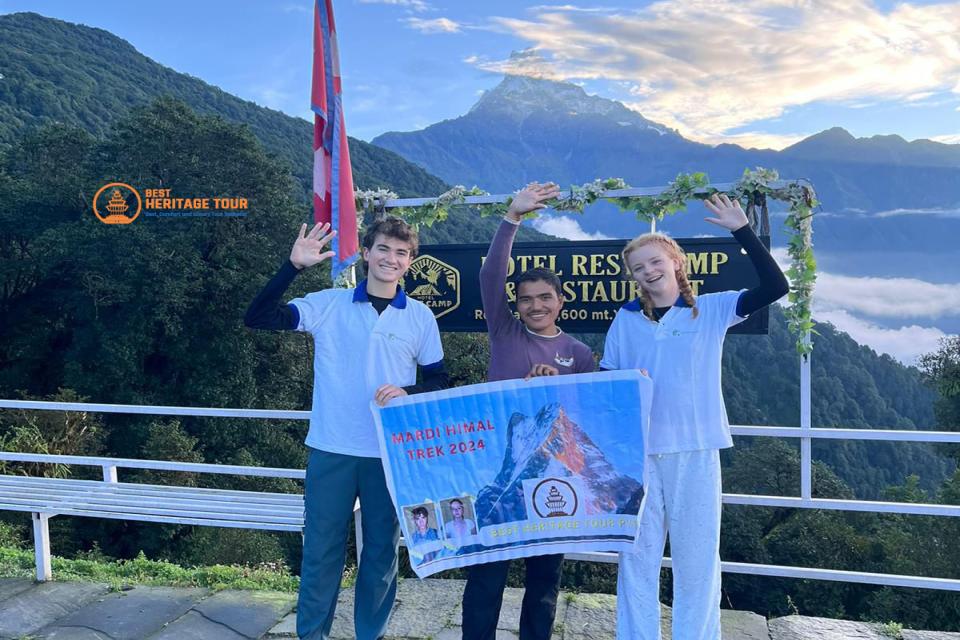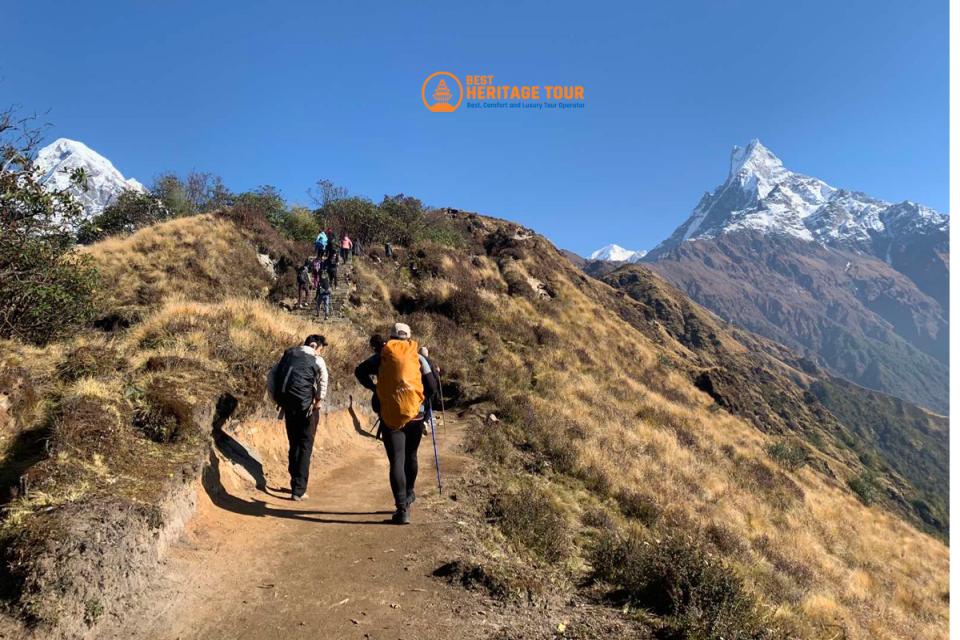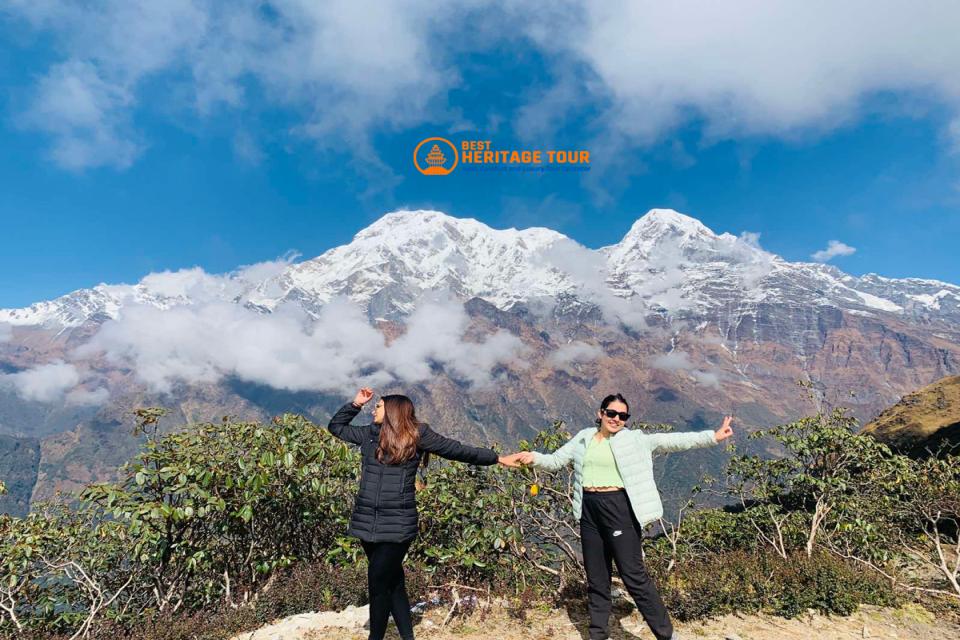The Mardi Himal Base Camp Trek is one of Nepal's top short treks, renowned for its breathtaking views of Machapuchare (Fishtail) and the Annapurna Range. This trek combines stunning natural beauty, peaceful trails, and rich cultural immersion, making it a must-do for adventure seekers and nature lovers. Its relatively less-crowded paths and affordable options add to its allure, making it an ideal choice for those seeking tranquility and unparalleled landscapes in the Annapurna region.
Planning your Mardi Himal trek for 2025/2026? Understanding the cost is crucial to ensure a smooth and budget-friendly journey. In this comprehensive guide, we break down the Mardi Himal trek cost, including permits, transportation, accommodation, meals, and more, helping you plan an unforgettable trekking experience in one of Nepal’s most scenic regions.
How Much Does the Mardi Himal Base Camp Trek Cost in 2025/2026?
One of the most frequently asked questions from trekkers is:
“What is the cost of the Mardi Himal Base Camp Trek for 2025/2026?”
Here’s a comprehensive breakdown of the Mardi Himal trek cost, covering permits, accommodation, meals, transportation, guide and porter fees, gear rental, hidden expenses, and more.
Average Mardi Himal Trek Cost (2025/2026)
The Mardi Himal Trek costs range from $400 to $900 USD per person, depending on your travel style. Below is an estimated cost breakdown for a 7-10 day itinerary:
|
Trekking Style |
Estimated Cost (USD) |
|---|---|
|
Budget (Independent) |
$400 – $500 |
|
Mid-Range (Guide + Porter) |
$600 – $750 |
|
Premium (All-Inclusive) |
$800 – $900 |
Note: These prices typically cover transportation to and from Pokhara, basic meals, teahouse stays, permits, and staff costs if you're traveling with a guide.
Mardi Himal Trek Permit Costs
To trek in the Annapurna region, you’ll need the following permits:
|
Permit Type |
Cost (NPR) |
Approx. Cost (USD) |
|---|---|---|
|
Annapurna Conservation Area Permit (ACAP) |
NPR 3,000 |
~$23 |
|
TIMS Card (Trekkers’ Information Management System) |
NPR 2,000 |
~$15 |
Pro Tip: When you book with a licensed agency like Best Heritage Tour, these permits are often included in your trekking package.
Transportation Costs
Your trek begins in Pokhara, which you can reach from Kathmandu via bus or flight. From there, you’ll head to Kande or Phedi, the starting points of the trail.
|
Route |
Cost (USD) |
|---|---|
|
Kathmandu → Pokhara (Bus) |
$8 – $12 |
|
Kathmandu → Pokhara (Flight) |
$90 – $120 |
|
Pokhara → Kande or Phedi (Taxi/Jeep) |
$10 – $30 |
Private transfers can be more expensive but provide convenience and time savings.
Accommodation and Food Expenses
Teahouses along the Mardi Himal Trek route offer simple but cozy lodging and traditional Nepali meals. Here’s a breakdown of estimated accommodation and meal expenses:
|
Expense Type |
Estimated Cost (USD) |
Details |
|---|---|---|
|
Rooms |
$5 – $10 per night |
Twin-sharing in basic teahouses |
|
Meals |
$20 – $30 per day |
Includes Dal Bhat, noodles, pancakes, tea, etc. |
Meals are your biggest daily expense on the trail. A typical day includes three meals and several hot drinks.
Guide and Porter Charges
Hiring an experienced guide and porter ensures safety, cultural insight, and local knowledge.
|
Role |
Daily Rate (USD) |
|---|---|
|
Licensed Guide |
$25 – $35 |
|
Porter (20–25kg) |
$18 – $25 |
|
Guide-Porter Combo |
~$30 |
Booking through a registered agency like Best Heritage Tour guarantees insured staff, fair wages, and reliable service.
Gear Rental Costs (If Not Bringing Your Own)
Pokhara and Kathmandu both offer affordable gear rental services:
|
Equipment |
Rental Price (Per Day) |
|---|---|
|
Sleeping Bag |
$1 – $2 |
|
Down Jacket |
$1.5 – $3 |
|
Trekking Poles, Gaiters |
$1 – $2 |
If you prefer to buy your gear, expect to spend $100–$200 depending on brand and quality.
Hidden & Miscellaneous Expenses
Budget for small but essential add-ons during your trek:
- Charging devices: $2 – $3/hour
- Hot showers: $2 – $5
- Wi-Fi (where available): $2 – $3
- Tips: $5 – $10/day for your guide and porter
Pro Tip: Always carry enough cash in Nepali Rupees as there are no ATMs along the Mardi Himal trail.
Best Time to Trek Mardi Himal and How It Affects Costs
The best seasons to trek Mardi Himal are:
- Spring (March–May) – Clear skies, blooming rhododendrons
- Autumn (September–November) – Best visibility of the mountains
During the peak season:
- Teahouse prices may increase slightly
- Advance bookings are highly recommended
Trekking in the off-seasons (monsoon or winter) can lower some costs but presents risks like leeches, landslides, or snow-blocked trails.
Is the Mardi Himal Trek Worth the Cost?
Absolutely! For less than $1,000, you get:
- Jaw-dropping Himalayan panoramas
- Authentic teahouse experiences
- A quiet, off-the-beaten-path trail with fewer crowds
- Cultural interactions with local communities
- A short but incredibly rewarding 7–10 day adventure
Whether you trek independently or book a guided group, the Mardi Himal Base Camp Trek delivers unmatched value for nature lovers, photographers, and cultural explorers alike.
Final Thoughts
If you’re looking for a budget-friendly Himalayan escape in 2025 or 2026, the Mardi Himal Base Camp Trek is an unbeatable choice. Offering stunning landscapes, peaceful trails, and an authentic cultural experience, it strikes the perfect balance between adventure and tranquility.
Whether you decide to trek independently or book a guided trek with a reliable agency, Mardi Himal offers exceptional value for nature lovers, photographers, and cultural explorers. With Best Heritage Tour, you can enjoy a seamless trekking experience, with all logistics handled for you.
Contact Us for More Information & Bookings
- Phone/WhatsApp/Viber: +9779851149197 / +9779810043046
- Email: bestheritagetour@gmail.com / info@bestheritagetour.com
- Website: www.bestheritagetour.com
- Location: Thamel Marg, Kathmandu, Nepal
For hassle-free planning, expert guidance, and transparent pricing, we’re here to help you make your Mardi Himal Base Camp Trek a reality!
Author: Best Heritage Tour
Date: 11th April, 2025





